The jigs and method I used for the coppering of the HMS Triton section model in scale 1:48.
First trials were with this roller I made with an older (i Think Proxxon) saw blade of a circular saw.
....much more teeth, than the usual rollers, usable for smaller scales
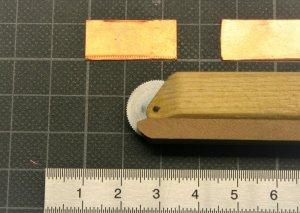
another jig I made, but were not happy with the result is this one
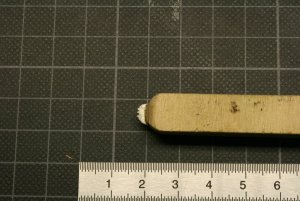
So finally I went to Bernhard Froelich´s way he showed in his book
first of all you need a stamp rectangular shape and install small nails in the pattern you need, cutted heads and flatten the cut as much as possible, so that the nails are not making holes in the copper. These are the "fathers" of the jig
On the top is the jig used with the Triton of this building log, on the left side every time as an example the copper plate as a result. On this Triton the copper tin was a little bit too thick, in the meantime I am using thinner copper with better results, one example I will show you later
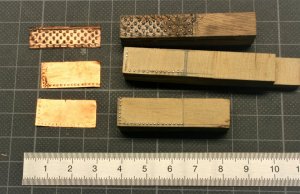
Now we come to the "mother". You have to produce a block with a notch in the size of your standard copper plates, in this notch a stiff and hard rubber block has to be installed and fixed.

from the copper sheets you have to cut with a sharp knife or tin scissor the copper plates in the size you need
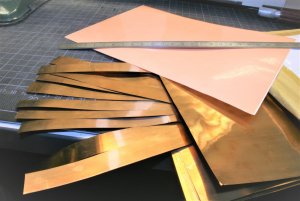
Put one copper plate into the jig, means on top of the rubber, into the mother
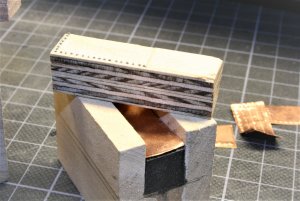
on top the father with the nails in direction of the copper
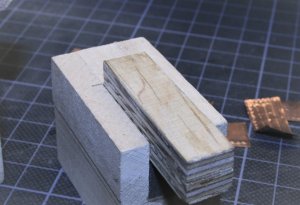
put this into your plain vice.....the pressure you have to check and make some trails......with mor preassure the nail pattern is getting more intensive
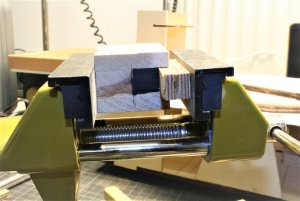
and the result, put the nailed copper plate out of the jig
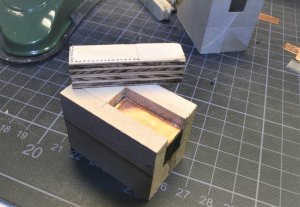
And here you can see the plates used at a HMS Triton section model

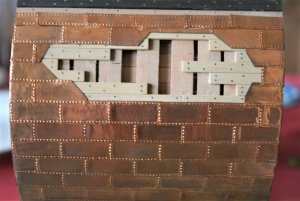

First trials were with this roller I made with an older (i Think Proxxon) saw blade of a circular saw.
....much more teeth, than the usual rollers, usable for smaller scales

another jig I made, but were not happy with the result is this one

So finally I went to Bernhard Froelich´s way he showed in his book
first of all you need a stamp rectangular shape and install small nails in the pattern you need, cutted heads and flatten the cut as much as possible, so that the nails are not making holes in the copper. These are the "fathers" of the jig
On the top is the jig used with the Triton of this building log, on the left side every time as an example the copper plate as a result. On this Triton the copper tin was a little bit too thick, in the meantime I am using thinner copper with better results, one example I will show you later

Now we come to the "mother". You have to produce a block with a notch in the size of your standard copper plates, in this notch a stiff and hard rubber block has to be installed and fixed.

from the copper sheets you have to cut with a sharp knife or tin scissor the copper plates in the size you need

Put one copper plate into the jig, means on top of the rubber, into the mother

on top the father with the nails in direction of the copper

put this into your plain vice.....the pressure you have to check and make some trails......with mor preassure the nail pattern is getting more intensive

and the result, put the nailed copper plate out of the jig

And here you can see the plates used at a HMS Triton section model



Last edited:




